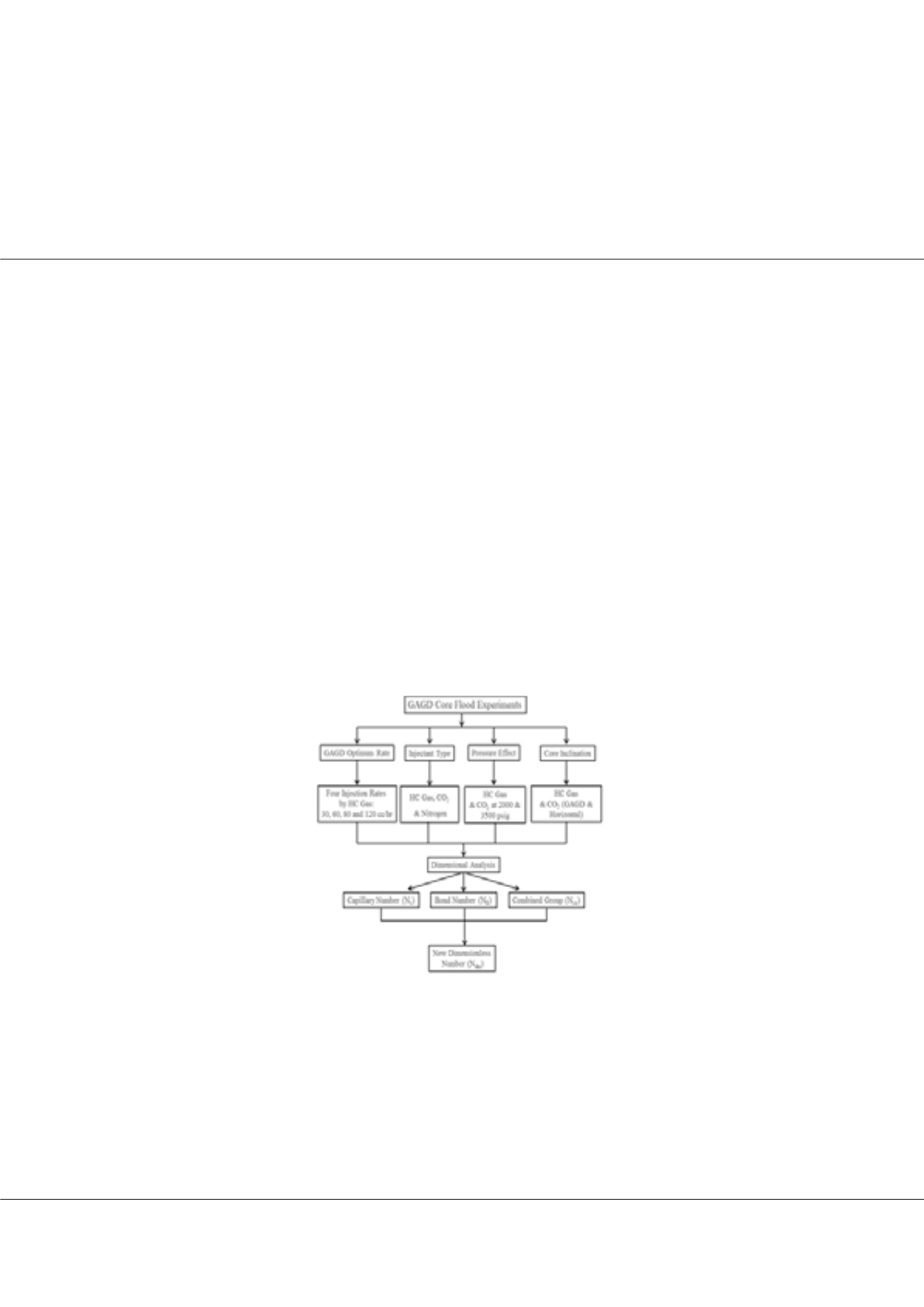

Page 44
conferenceseries
.com
Volume 8, Issue 4 (Suppl)
J Pet Environ Biotechnol, an open access journal
ISSN: 2157-7463
Oil Gas Expo 2017
July 13-14, 2017
Oil and Gas
July 13-14, 2017 Berlin, Germany
3
rd
International Conference and Expo on
Impact of pure CO
2
and carbonated water injection to enhance recovery of heavy oil
Behzad Rostami
1
, Mohammad Mohammadifar
2
, Peyman Pourafshary
3
and
Maryam Khosravi
4
1
University of Tehran, Iran
2
Iranian Offshore Oil Company, Iran
3
Sultan Qaboos University, Oman
4
National Iranian Oil Company, Iran
P
erformance of CO
2
and hydrocarbon (HC) gas injection into a heavy crude oil was investigated at high pressure/temperature
condition, using high permeable well-sorted original reservoir sandstone. Complete series of PVT and slime tube tests were
followed by vertical and horizontal gas floods to study the impact of injection rate, injectant type and reservoir pressure. Dimensional
analysis was performed to study the involved mechanism and forces. Sometimes direct injection of CO
2
may not be practically and
economically possible. In addition, in plans for CO
2
storage, CO
2
as a free phase in a reservoir is coupled with a significant leakage
risk that prevents the scenario of direct injection. Therefore, in the second part, the enhancement of heavy oil recovery was tested
by the carbonated water injection. The results of the first part of core flooding experiments demonstrated that gravity and solubility
are the most effective mechanisms in oil recovery. The reduction in oil recovery in horizontal flooding for HC gas injection is higher
due to the smaller difference between the densities of CO
2
and oil compared to HC gas/oil systems. Furthermore, a small increase
of oil recovery after breakthrough (BT) during N
2
injection proves the importance of the solubility mechanism. Therefore, In this
case, more precise analysis could be performed by applying the dissolution number instead of capillary and/or bond number. For the
second part of the experiments, the results obtained demonstrate that the capability of carbonated water to enhance oil recovery for
both secondary and tertiary flooding is significantly greater than that for water flooding. The creation of a low resistance flow channel
and low oil recovery in water flooding is compensated by CO
2
diffusion and subsequent viscosity reduction and oil swelling in heavy
oils.
Figure 1:
Experimental design and dimensional analysis scheme during high pressure gravity assisted flow.
Biography
Behzad Rostami is an Associate Professor of Petroleum Engineering in the Institute of Petroleum Engineering (IPE) at University of Tehran, Iran. His research
interests involve gas injection based methods of enhanced oil recovery, foam injection and carbonated water injection, CO2 sequestration in saline aquifers and
depleted hydrocarbon reservoirs, gravity drainage and multi block interaction in fractured media. He has authored more than 40 technical papers in international
journals and has also guided more than 30 graduate students.
brostami@ut.ac.irBehzad Rostami et al., J Pet Environ Biotechnol 2017, 8:4 (Suppl)
DOI: 10.4172/2157-7463-C1-034
















